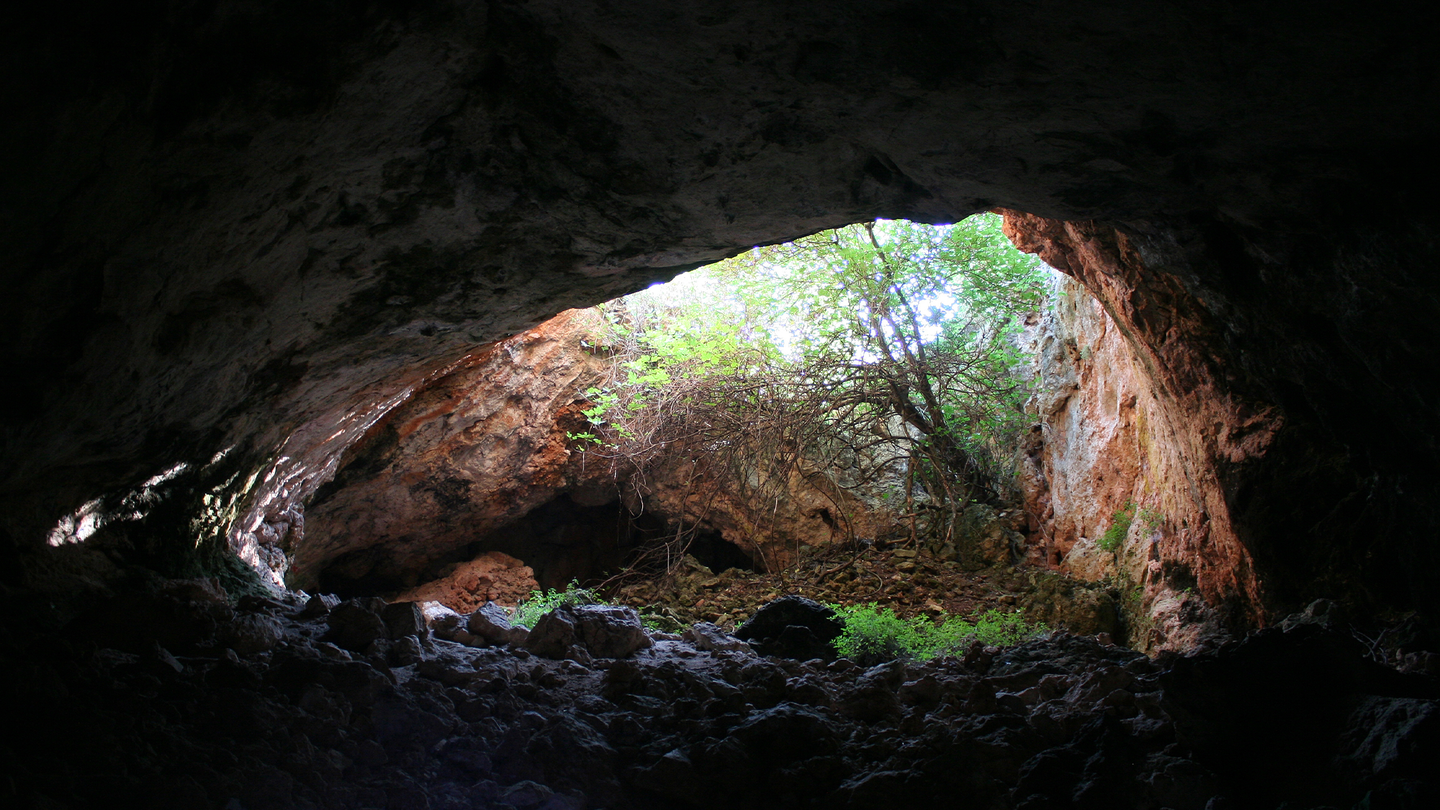Early humans carved old skeletal remains from burial caves into tools
An ancient cup made out of a human skull was discovered in a cave in Spain.

The values and lifestyles of past societies are often revealed to anthropologists and archaeologists through their relationship with death and the burial of their dead. It’s an essential hallmark of human cultural systems and part of this relationship involves manipulations, retrieval, and reburial of human remains after an individual had died. Now, some new evidence from a cave in Spain shows that early humans may have returned to the burial site to craft tools from the bones and possibly extract marrow, potentially as food. The findings are detailed in a study published September 20 in the open-access journal PLOS One.
[Related: Cremated remains still hold clues to life and death in the Bronze Age.]
Caves along the Iberian Peninsula were not only Neanderthal crab cooking hotspots, but also as places to bury the dead and modify human remains for thousands of years. Using caves for burials was a common practice in multiple present-day countries, and it began to become more common in Portugal and Spain around the 4,000 BCE. The archaeological sites in this region show evidence that human remains were later manipulated for other uses, but the cultural meaning behind these changes is still largely unclear.
University of Bern bioarchaeologist Zita Laffranchi, anthropologist Marco Milella, and Universidad de Córdoba archaeologist Rafael M. Martínez Sánchez co-wrote the study, and believe that the underground and dark features of the caves likely provided ancient humans with a well-suited place to house remains.
“Such traits are shared by ancient Neolithic farming societies in Iberia, Europe, and other parts of the world, as part of a system of transcultural responses towards death. As if it were a ‘device of making ancestors,’ the community remains grouped together after death, in a subterranean space interpreted as a perpetual projection of an eternal nocturnal environment,” the study authors wrote in an interview accompanying the paper.
In the new study, the team examined human remains from the Cueva de los Marmoles cave in southern Spain. They looked at the bones of at least 12 people. Radiocarbon dating pegged the burials between the fifth and second millennium BCE, roughly from this area’s Neolithic period to its Bronze Age. Most of the items from this study were excavated between 1998 and 2018. These include a diligently carved human skull cup, a tibia that appears to have been modified for use as a tool, and dozens of other bone fragments found in the almost 27,000 square-foot cave.
New evidence suggests that some remains may have been intentionally broken and scraped for marrow for up to a year after the Marmoles individuals had died. The team noted the intentional post-mortem modifications made to the remains, which include some fractures and scrapes to the bones. These cuts could have resulted from efforts to get marrow and other tissues from the bones for dietary or practical uses.
They were initially surprised by the extended time frame that the cave was used for funerary practices.
“This suggests that Marmoles was a symbolic landmark for human communities living in the area, and was likely to be the presence of specific funerary traditions,” wrote the authors. “Secondly, the most interesting aspect of our findings was the complex treatment of the remains, often difficult to interpret, but which unequivocally points to rather homogenous actions, and well-defined traditions and beliefs systems.”
[Related: Extinct human cousins may have beaten us to inventing burial rituals.]
These results match other cave sites in the region, and show that burying human remains in caves and later modifying and using them as food and tools was daily widespread. While there could also be further symbolic purposes for these body modifications, those are still unclear and need further study.
The authors say that the next steps will include continued archaeological study of the save and apply more radiocarbon, anthropological, and zooarchaeological analyses to the skeletal remains that may emerge in future digs at Marmoles and other burial caves in the area.